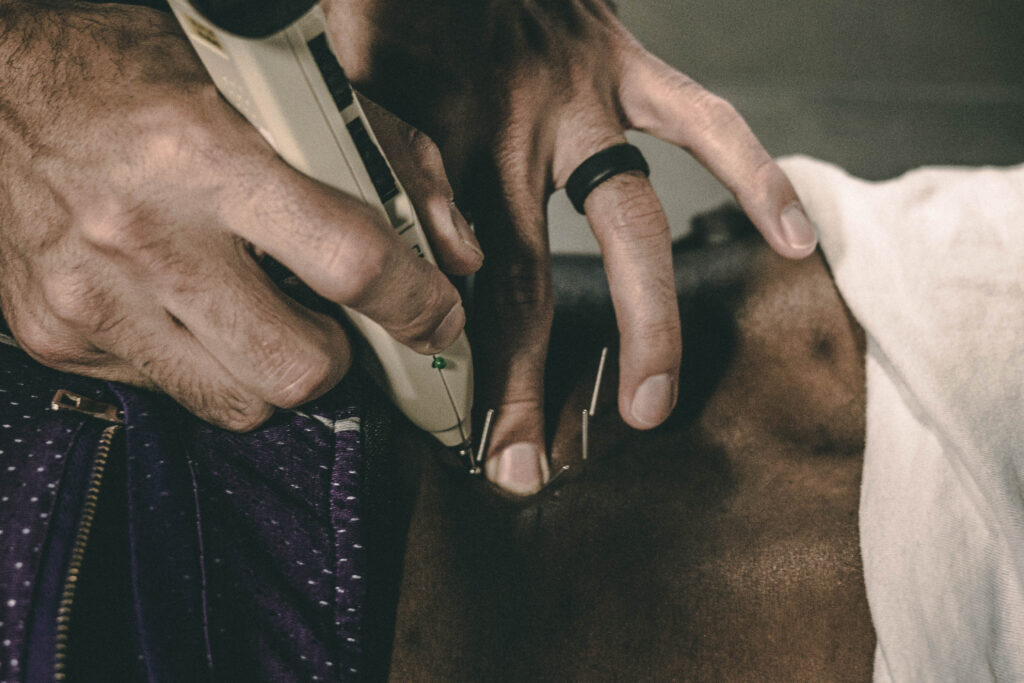At Myokinetix we offer sessions of acupuncture for patients with our licensed acupuncturist Danny Burbano. We interviewed him on his practices and to see how a session might go at Myokinetix. To see the full Q&A you can watch it here. This blog also covers some additional information about acupuncture.
To start off, What is Acupuncture?
Acupuncture is a technique that uses needles to promote natural healing in order to improve function. There are several benefits that include releasing tight muscles or increasing blood flow, range of motion, or improved mobility in the joint.
How does acupuncture work?
Acupuncture is a therapeutic practice that aims to restore balance and promote homeostasis in the human body. This is achieved through the stimulation of specific points using sterile, ultra-thin needles, which are typically painless. In addition to needle insertion, acupuncture may incorporate other techniques such as cupping, gua sha, microstim, and manual deep tissue release.
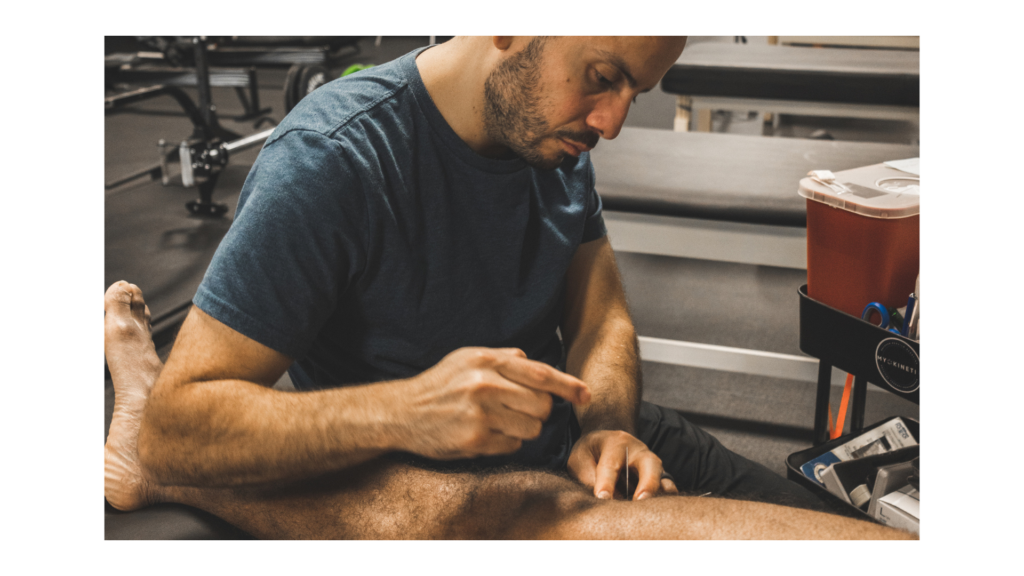
Thanks to advances in research, acupuncture has become more widespread, being utilized in hospitals and sports teams to enhance outcomes and expedite recovery.
What conditions or health issues can acupuncture treat?
Considered to be a versatile therapy that addresses a wide range of health conditions, acupuncture notably plays a role in accelerating the healing process by improving blood flow and reducing inflammation in the body. By stimulating specific points, acupuncture effectively reduces pain by modulating the nervous system’s activity, resulting in decreased sensitivity to pain. Particularly beneficial for chronic pain, acupuncture activates the sympathetic and parasympathetic systems, leading to the release of natural pain-relieving substances such as endorphins.
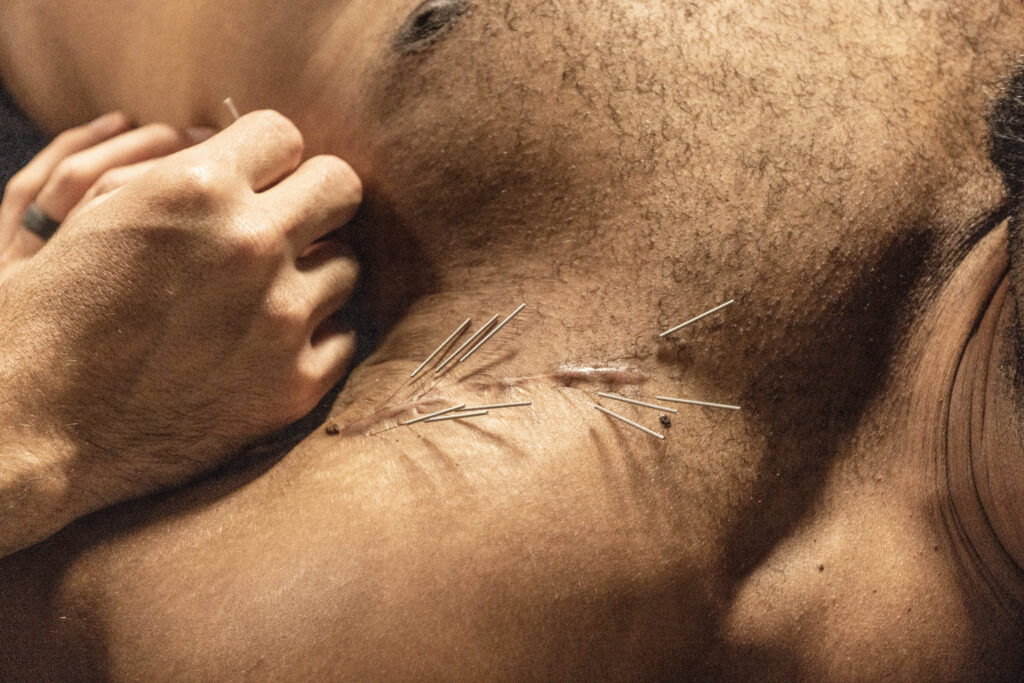
This aids in the reduction of pain and inflammation. Furthermore, acupuncture promotes healing by releasing blockages in local tissues and enhancing circulation, ultimately improving mobility.
Are there any age or health-related limitations to receiving acupuncture?
Acupuncture is a safe option for people of all ages and conditions, but certain factors like age, medical conditions, pregnancy, and needle sensitivity should be considered. To ensure safety and effectiveness, it is important to consult an experienced acupuncturist who specializes in your specific age group and can make necessary adjustments based on your health conditions.
If you are pregnant, informing your acupuncturist is crucial to receiving modified treatments suitable for pregnancy. For individuals sensitive to needles or with needle-related fear, non-needle techniques such as acupressure may be possible to be utilized. Seeking a licensed and experienced acupuncturist who takes your health history and concerns into account will help ensure a positive acupuncture experience that is both safe and effective for you!
How is an acupuncture treatment session conducted?
An acupuncture treatment typically starts with an initial consultation to gather information about your medical history, symptoms, and overall health. The acupuncturist will use thin, sterile needles to gently insert them into specific acupoints on your body, the number of which depends on your condition and treatment plan.
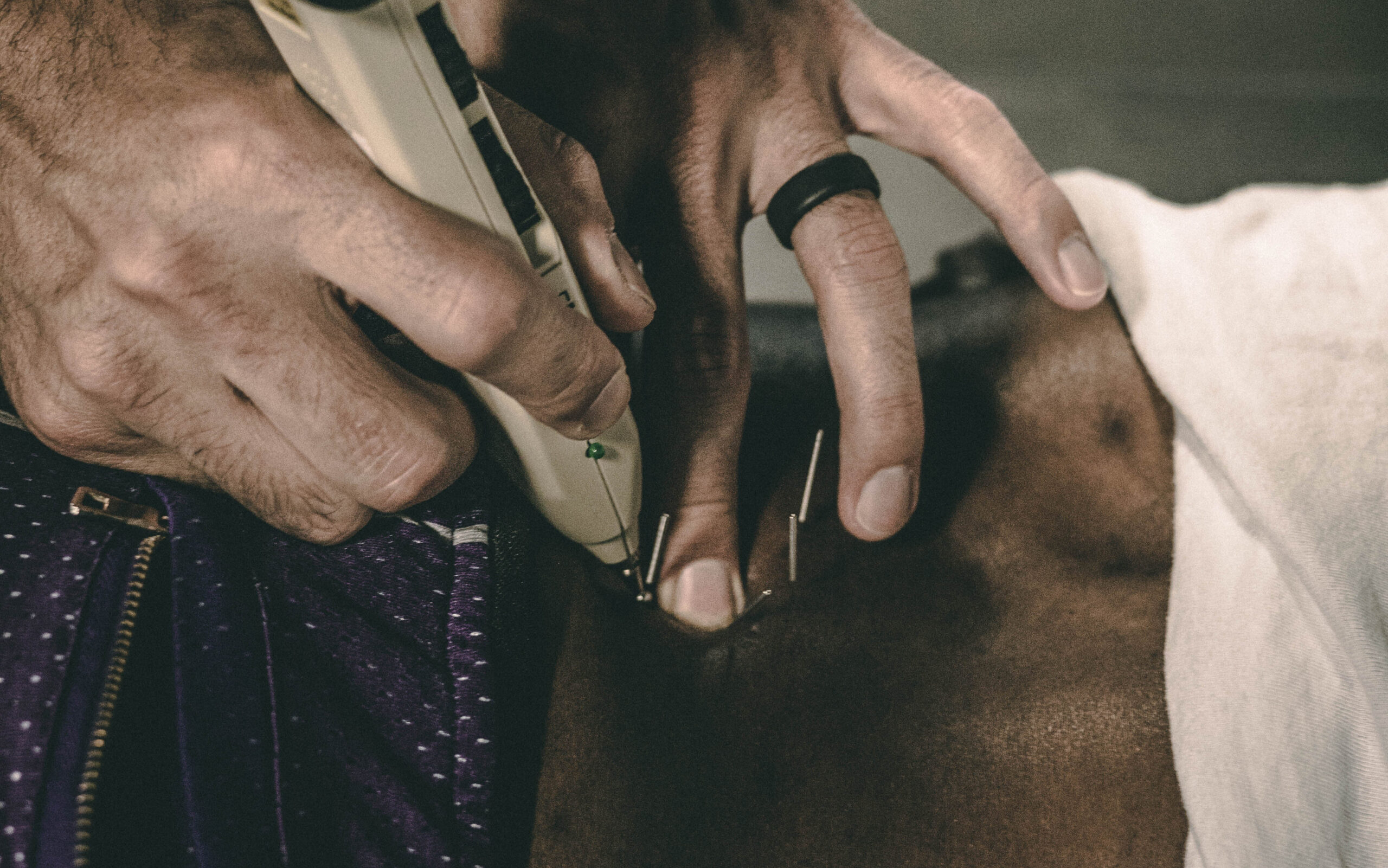
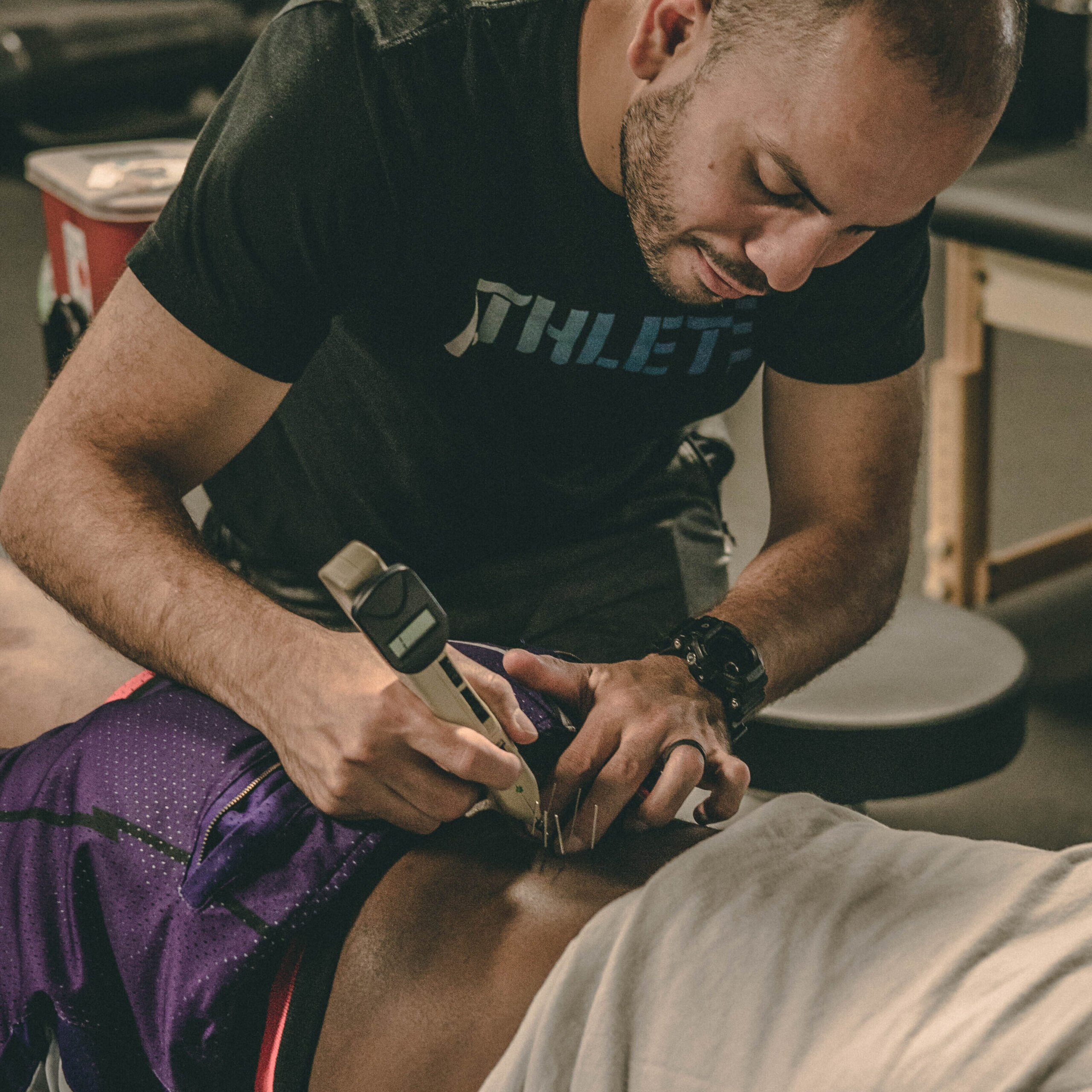
Once the needles are inserted, you may experience sensations like mild aches, tingling, or warmth, but acupuncture is generally not painful. The needles will remain in place for approximately 15 to 30 minutes while you relax. The acupuncturist may also incorporate additional techniques tailored to your needs, such as acupressure, cupping, or herbal remedies.
At the end of the recommended time, the acupuncturist will carefully remove the needles. They may discuss your session experience and provide any necessary post-treatment instructions or recommendations. The frequency and duration of acupuncture sessions vary depending on your condition, but multiple sessions over several weeks are commonly scheduled to achieve the best results.
Does acupuncture hurt? What are the sensations experienced during treatment?
The treatment is normally not a painful procedure, however, individual results may vary. Many people report feeling little to no pain during acupuncture sessions. Moderate discomfort, tingling, or warmth around the places where the needles are inserted are frequent sensations associated with acupuncture. These sensations are usually mild and fleeting. During the session, some people may feel a sense of calm or a subtle flow of energy throughout their bodies. Any feelings you have should be communicated to your acupuncturist so that they can make any necessary modifications to ensure your comfort during the treatment.
Are all needles the same?
No, there are different needles that fulfill different purposes. For example, the main needles that go in specific spots on the body, or there are needles that can reduce swelling or ones that reactivate muscles.
Do the needles hurt?
Overall, it is virtually painless, but patients might feel the needles more toward their feet. It usually just feels like a slight pinch since the needles are almost the width of a hair.
How long might a session last?
A session might take around 30 to 45 minutes.
How many acupuncture sessions are typically required to see results?
The number of acupuncture sessions required to achieve results can vary depending on factors such as the condition being treated, its severity, and your individual response. Typically, acupuncture involves multiple sessions to optimize outcomes, as it is administered in a series rather than a single session.
Your acupuncturist will develop a personalized treatment plan based on your specific needs, your schedule, and how you respond to the sessions. They will regularly assess your progress and make any necessary adjustments to the treatment plan as they see fit.
It’s important to maintain realistic expectations and understand that everyone’s response to acupuncture is unique. Some individuals may start experiencing improvements even after just a few sessions, while others may require more time to notice significant results. Your acupuncturist will be your partner throughout the process. They can provide guidance on the expected duration of treatment and monitor your progress based on your specific condition.
Are there any risks or side effects associated with acupuncture?
When performed by a qualified acupuncturist, acupuncture is generally safe. However, there are potential risks and side effects to consider, although they are usually minimal. Commonly reported side effects include mild and temporary soreness or bruising at the needle insertion sites. Temporary fatigue or dizziness may also occur after a session but can be relieved through rest and hydration.
Can acupuncture be used as a complementary therapy alongside physical therapy?
Yes, acupuncture can be used in collaboration with physical therapy. It is widely accepted as a beneficial complementary treatment to improve general health and well-being in many circumstances.
Acupuncture has several advantages when used in conjunction with physical therapy. It can help manage pain and symptoms caused by a variety of conditions, including chronic pain. Acupuncture is also commonly used to relieve stress, improve sleep, and promote relaxation, all of which can benefit overall health.
What’s included in a session at Myokinetix?
Treatment begins with a new pack of sterile needles and the patient lying down/positioned accordingly. Then, for the knee pain example, Danny finds specific points via landmarks on the legs and inserts needles as needed. In the video, in total, he only inserted around seven needles, four in the knees, and three in the ankle and shin. In a patient’s session, he can also apply a microcurrent through the needles. After around 30 to 45 minutes total, he turns off the current and takes the needles out and patients can feel an immediate openness or relaxedness.
Who can acupuncture benefit?
First off, it can help people who are treating recent injuries. Some examples are an ankle sprain, post-surgery ACL reconstruction, to a rotator cuff tear. It can help people with chronic pain such as back or lingering neck pain. It can also help patients facing muscle atrophy. Injuries sometimes lead to muscle atrophy in which muscles go to sleep whilst acupuncture can help fire and wake up the muscles.
Why Acupuncture is The Perfect Partner For Physical Therapy?
Overall, acupuncture can help accelerate the process of healing and boost recovery time. During the steps of PT, acupuncture goes along with the steps and works alongside as an aid. The first steps of PT usually involve swelling, and acupuncture helps reduce swelling by opening blood vessels. The needles stimulate blood vessels and lymph nodes which get rid of swelling along the joint, releasing tightness in knots and improving joint mobility.
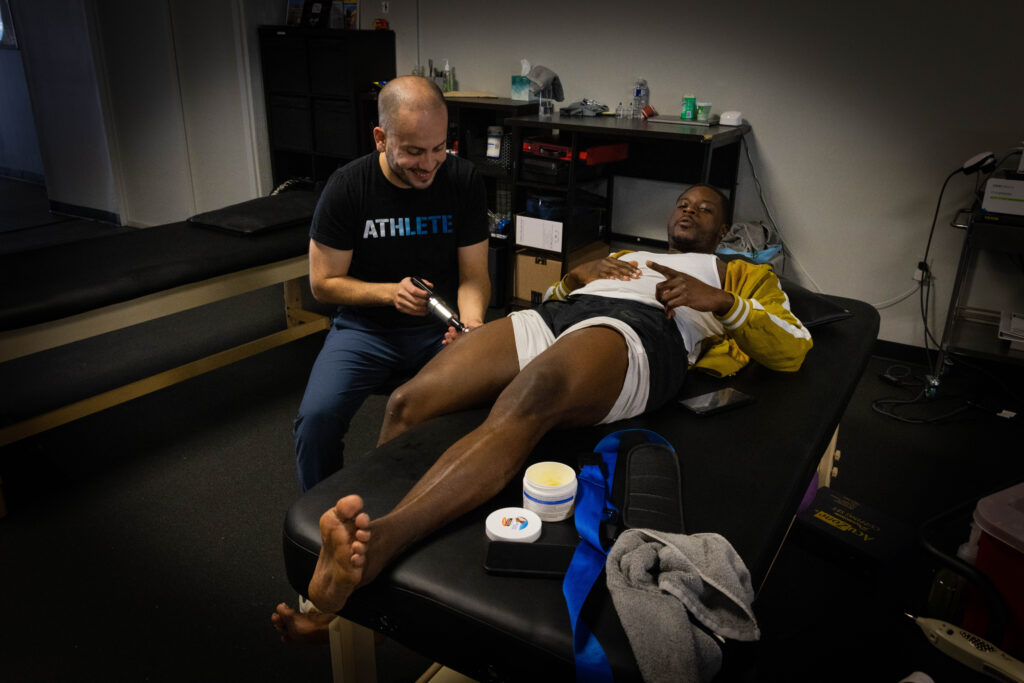
Thus, if anything in this article applies to you or someone you know, reach out to Myokinetix by calling 973-585-4990 or emailing us at info@myokinetix.com. You can also schedule a call to speak to our team here to begin the therapeutic practice of acupuncture!

